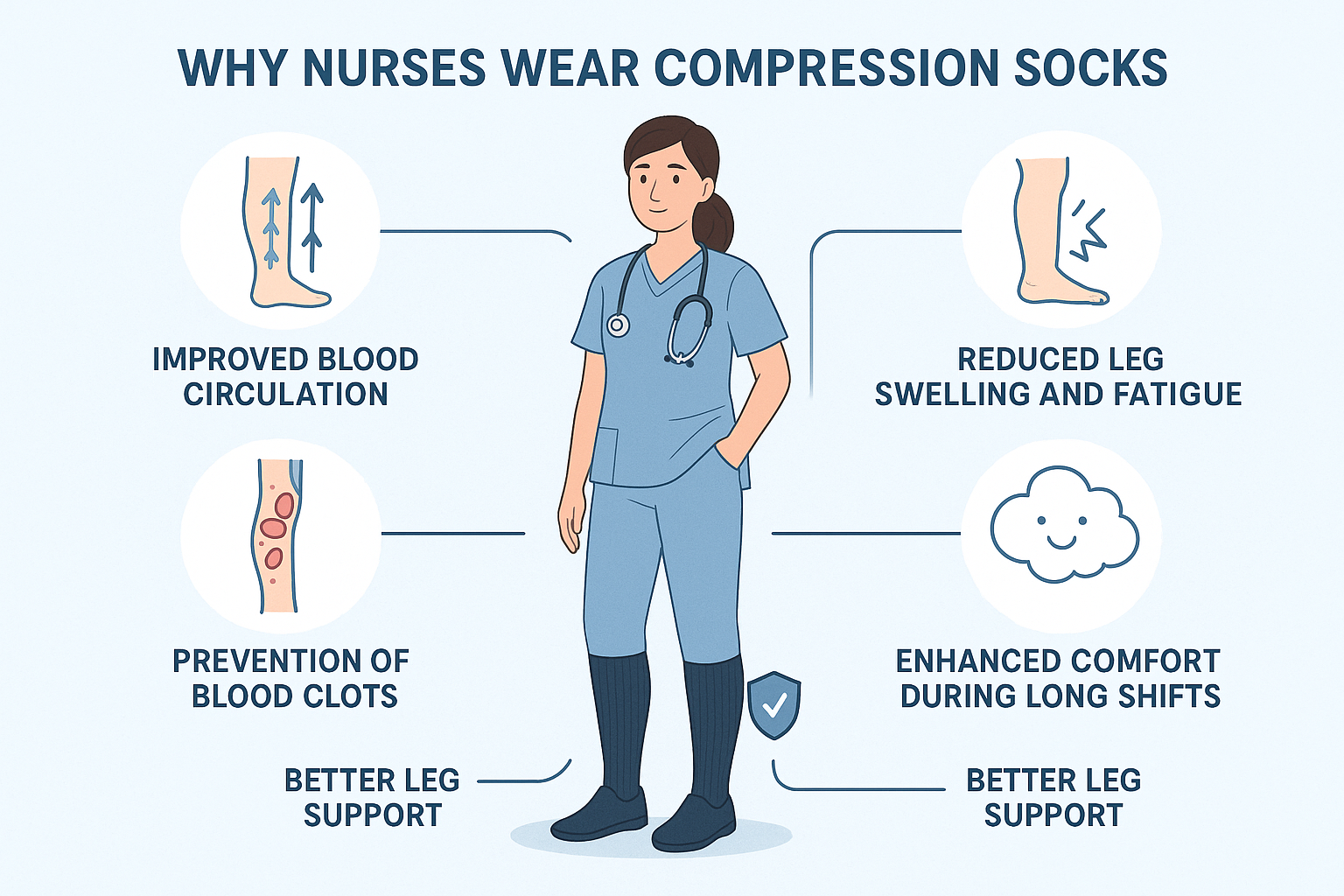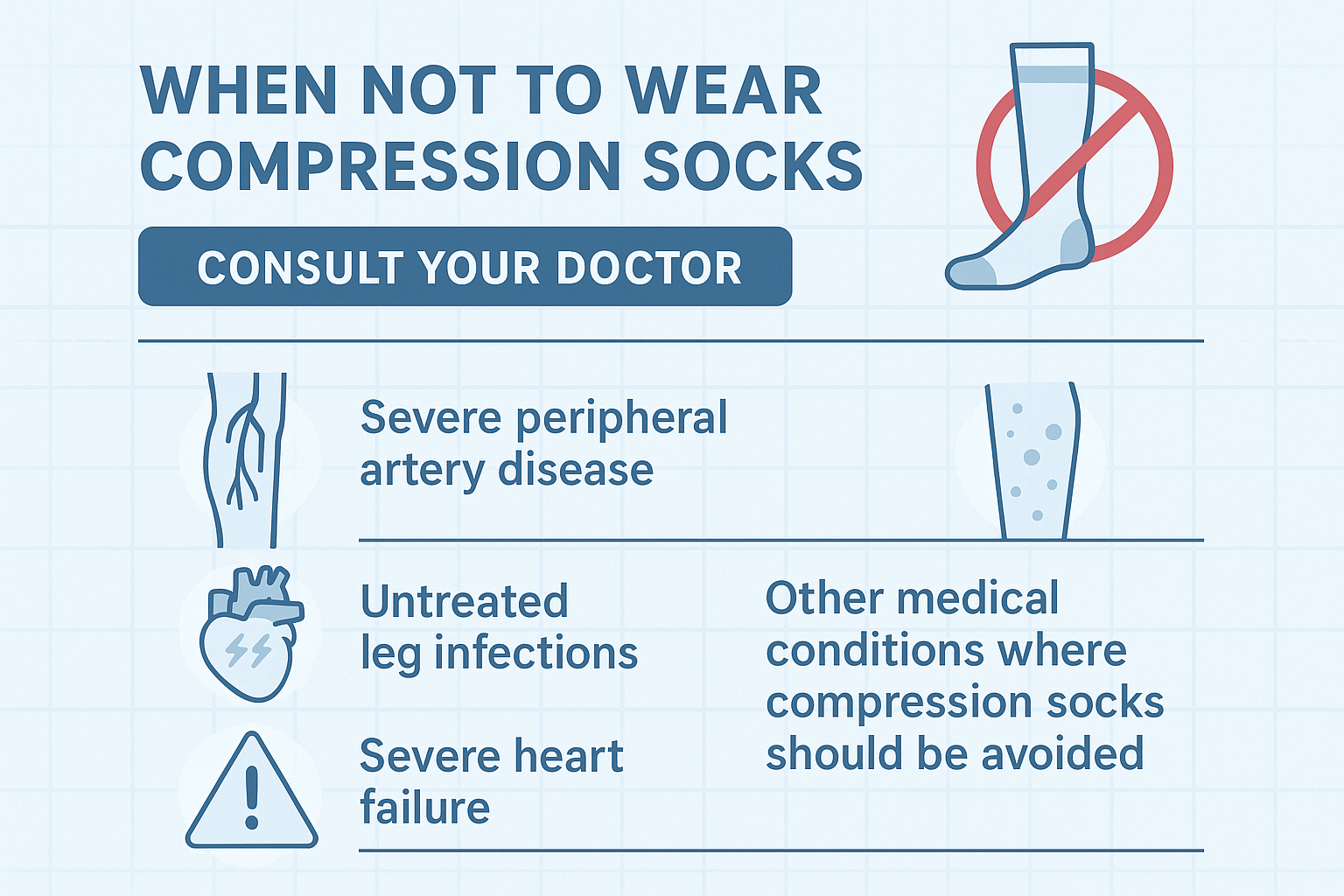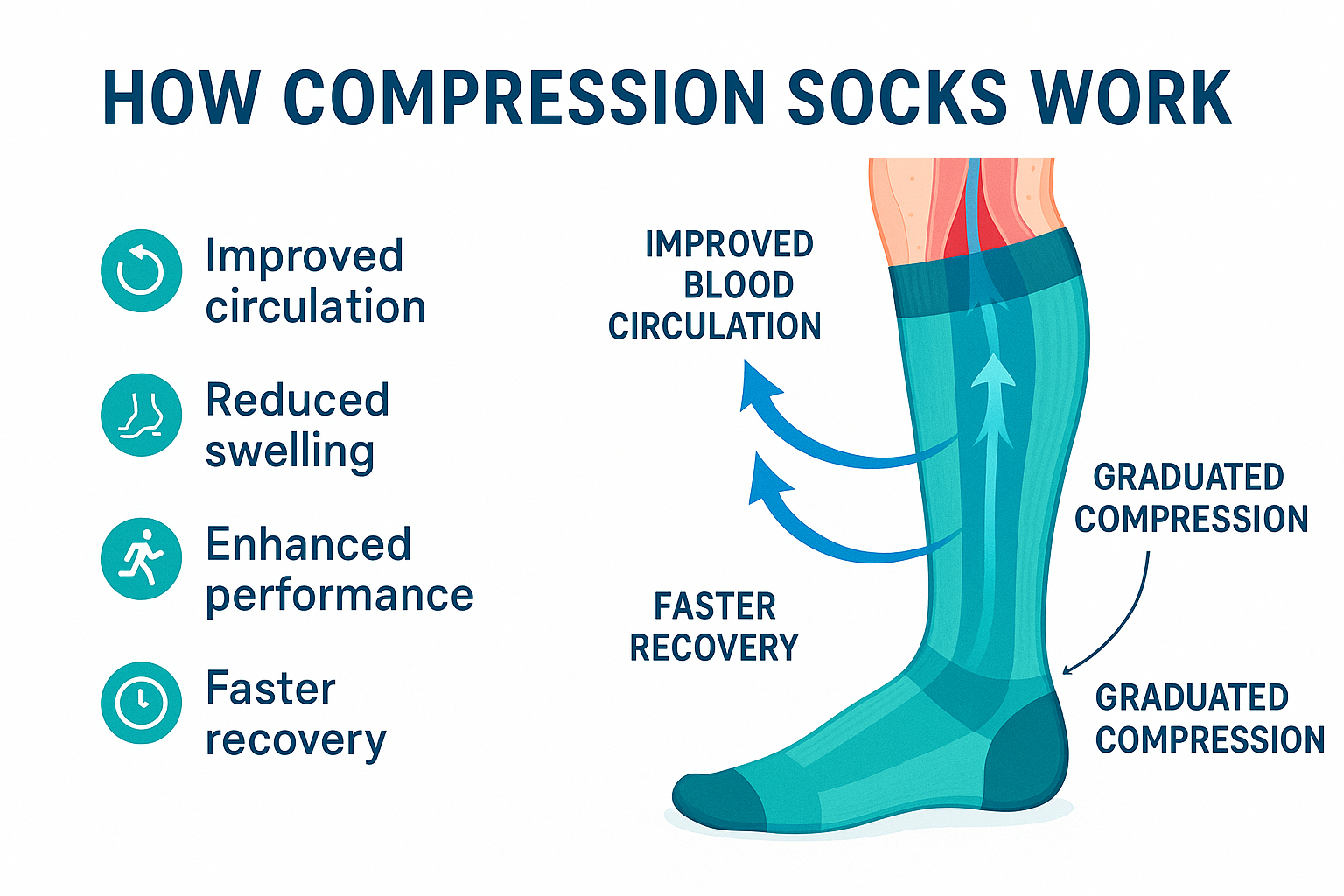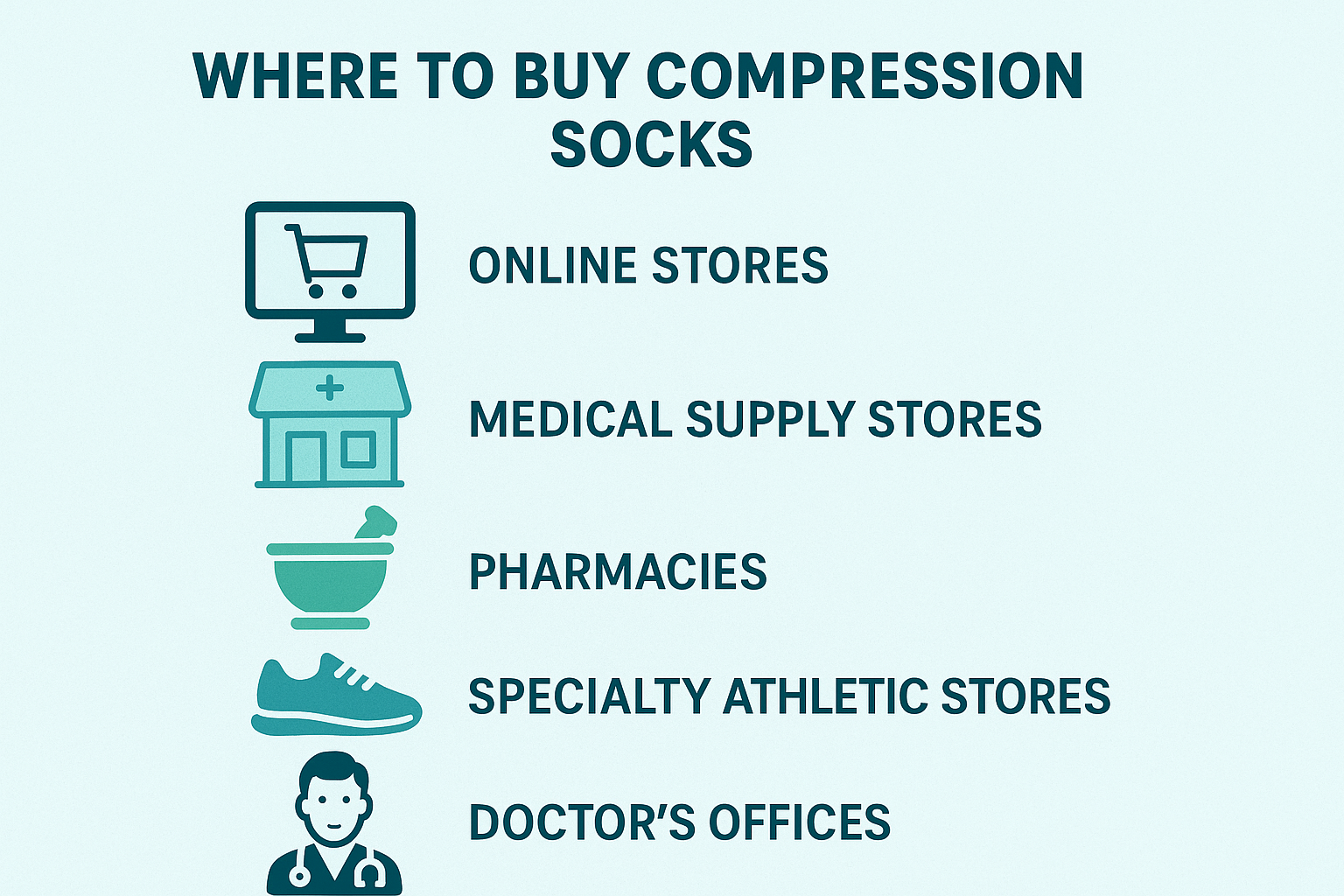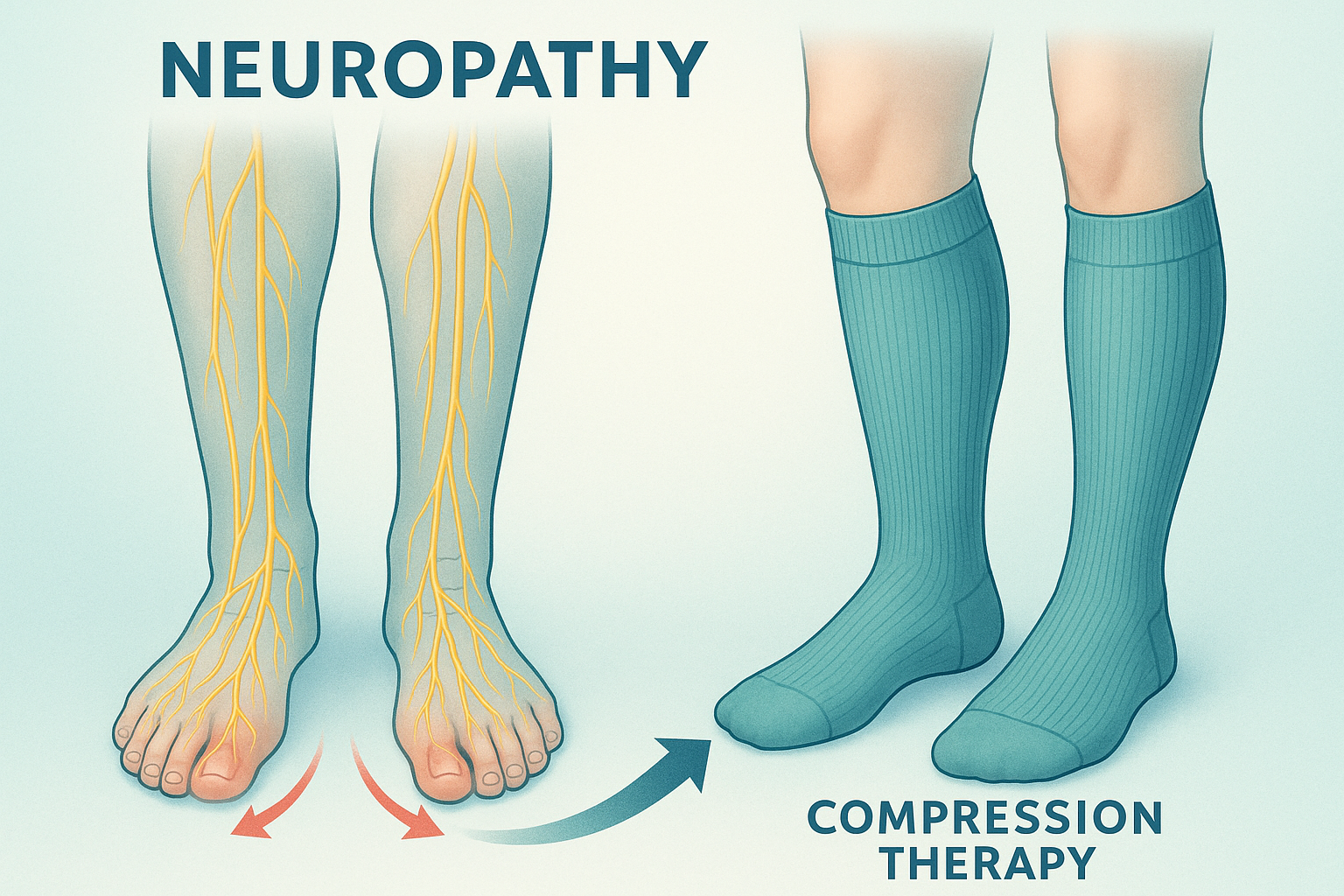
How Tight Should Compression Socks Be? Finding the Perfect Fit
Compression socks are designed to improve circulation, reduce swelling, and boost comfort — but only if they fit correctly. Too tight, and they can cause discomfort or restrict blood flow. Too loose, and they won’t work effectively. So, how tight should compression socks be?
In this guide, we’ll explain what proper compression feels like, how to choose the right level of tightness, and how to tell if your socks are too snug or too loose. Getting the fit right ensures you get all the health and comfort benefits compression socks are known for.
How Compression Socks Work
Compression socks use graduated pressure — meaning they’re tighter at the ankle and gradually loosen up toward the calf. This design helps push blood upward toward your heart, improving circulation and reducing swelling or fatigue in the lower legs.
The key to their effectiveness is consistent, comfortable pressure — snug enough to stimulate blood flow, but not so tight that it causes numbness or pain.
How Tight Should Compression Socks Feel?
Properly fitted compression socks should feel snug and supportive but never painful. You should notice gentle pressure around your ankles and calves — similar to a firm hug, not a tourniquet.
Here’s what the right fit should feel like:
- The socks feel firm and supportive, especially at the ankle.
- You can move comfortably without your skin bulging or feeling pinched.
- Your toes have room to wiggle, and your feet don’t feel tingly or cold.
- The socks stay in place all day without rolling, sliding, or bunching.
If your compression socks leave deep indentations, cause pain, or make your toes numb, they’re too tight and may need to be resized.
Compression Levels Explained (mmHg)
Compression socks are measured in millimeters of mercury (mmHg), which indicates how much pressure they apply. Choosing the right level is essential for finding the perfect balance of comfort and effectiveness.
- 8–15 mmHg (Mild): Ideal for light fatigue, daily comfort, and travel. Feels gently snug.
- 15–20 mmHg (Moderate): Best for standing or sitting all day, mild swelling, or varicose veins. Feels firmly supportive.
- 20–30 mmHg (Firm): Recommended for medical use or significant swelling. Feels tight but tolerable — should be doctor-approved.
- 30–40 mmHg (Extra-Firm): Used for medical recovery under professional supervision.
For most healthy adults, 15–20 mmHg is the ideal balance of support and comfort — like the compression levels in Green Drop Compression socks.
How to Measure for the Right Fit
Getting the right tightness starts with accurate measurements. You’ll need a soft tape measure and a few quick measurements before purchasing your socks.
1. Measure in the Morning
Legs are least swollen in the morning. Measuring early ensures accuracy and prevents choosing a size that’s too tight later in the day.
2. Measure These Key Areas
- Ankle circumference: The narrowest part just above your ankle bone.
- Calf circumference: The widest part of your calf.
- Leg length: From the floor to just below your knee.
3. Use the Size Chart
Each brand has its own size guide. Always compare your measurements to the manufacturer’s chart before ordering. At Green Drop Compression, we provide flexible sizing to accommodate a range of leg shapes comfortably.
How to Tell If Compression Socks Are Too Tight
Compression socks should never feel painful or restrictive. If you experience any of the following, they’re likely too tight:
- Numbness or tingling in your feet or toes
- Skin discoloration (bluish or pale tone)
- Deep indentations or marks that don’t fade quickly
- Difficulty putting them on or removing them
- Burning, cramping, or discomfort during wear
Wearing socks that are too tight can actually reduce circulation — the opposite of what compression therapy is meant to do. Always prioritize comfort over pressure intensity.
How to Tell If Compression Socks Are Too Loose
On the other hand, if your compression socks are too loose, they won’t provide enough support to improve circulation. Here’s how to tell:
- The socks slide down or wrinkle during wear
- You feel no noticeable pressure at the ankle
- They twist or bunch easily under shoes or pants
- There’s visible gapping between the sock and your skin
Loose socks won’t harm you, but they won’t help either. If this happens, size down or try a slightly higher compression level.
Tips for Putting On Compression Socks Comfortably
- Turn the sock inside out up to the heel.
- Place your foot inside the foot portion and pull over your heel.
- Gradually unroll the remaining fabric up your leg without bunching.
- Smooth out any wrinkles — avoid folding or doubling the fabric.
It may take a little practice at first, but properly applied compression socks should feel supportive and secure, not restrictive.
Need more help? Check our detailed guide: How to Put On Compression Socks.
When Compression Socks Feel Tight — But Are Actually Correct
It’s normal for new compression socks to feel tighter than regular socks, especially if you’re not used to wearing them. This snugness is what makes them effective — but it shouldn’t cross into discomfort.
After a few days of consistent wear, your legs will adjust to the sensation, and the socks will feel more natural.
Common Mistakes When Choosing Compression Socks
- ❌ Choosing a higher compression level than needed — more isn’t always better.
- ❌ Ignoring size charts — every brand fits differently.
- ❌ Wearing the wrong length — knee-high socks are ideal for most needs.
- ❌ Not replacing worn-out socks — compression weakens over time (usually 3–6 months).
- ❌ Using heat dryers — they damage elastic fibers and loosen the fit.
FAQs: How Tight Should Compression Socks Be?
Should compression socks feel tight all over?
No — they should feel tightest at the ankle and gradually looser toward the knee. This graduated pressure is what supports blood flow.
How tight is too tight for compression socks?
If they cause numbness, tingling, or pain, they’re too tight. Proper compression should feel snug but not restrictive.
Can compression socks be too loose?
Yes — if they slide down or feel like regular socks, they’re not providing enough pressure to improve circulation.
Do compression socks stretch over time?
Yes. Elastic fibers relax after repeated use and washing. Replace your socks every 3–6 months for consistent pressure and comfort.
What’s the ideal compression level for everyday wear?
Most people do well with 15–20 mmHg. It’s firm enough to support circulation but comfortable for daily use.
Related Guides
Final Thoughts: The Perfect Fit Matters
Compression socks only work if they fit correctly — snug, supportive, and never painful. The right tightness helps you enjoy the full benefits of improved circulation, reduced swelling, and lasting comfort throughout your day.
If your current socks feel uncomfortable or ineffective, it may be time to try a new size or compression level.
Discover your ideal fit with Green Drop Compression socks — engineered with precise graduated pressure, breathable fabrics, and flexible sizing to keep you comfortable and energized all day long.


